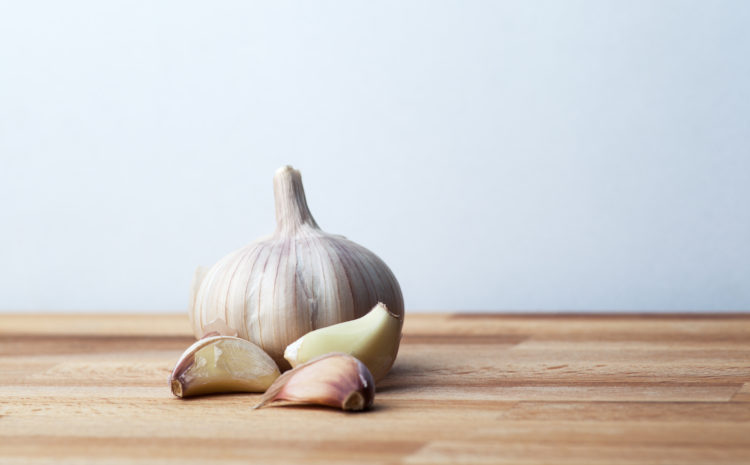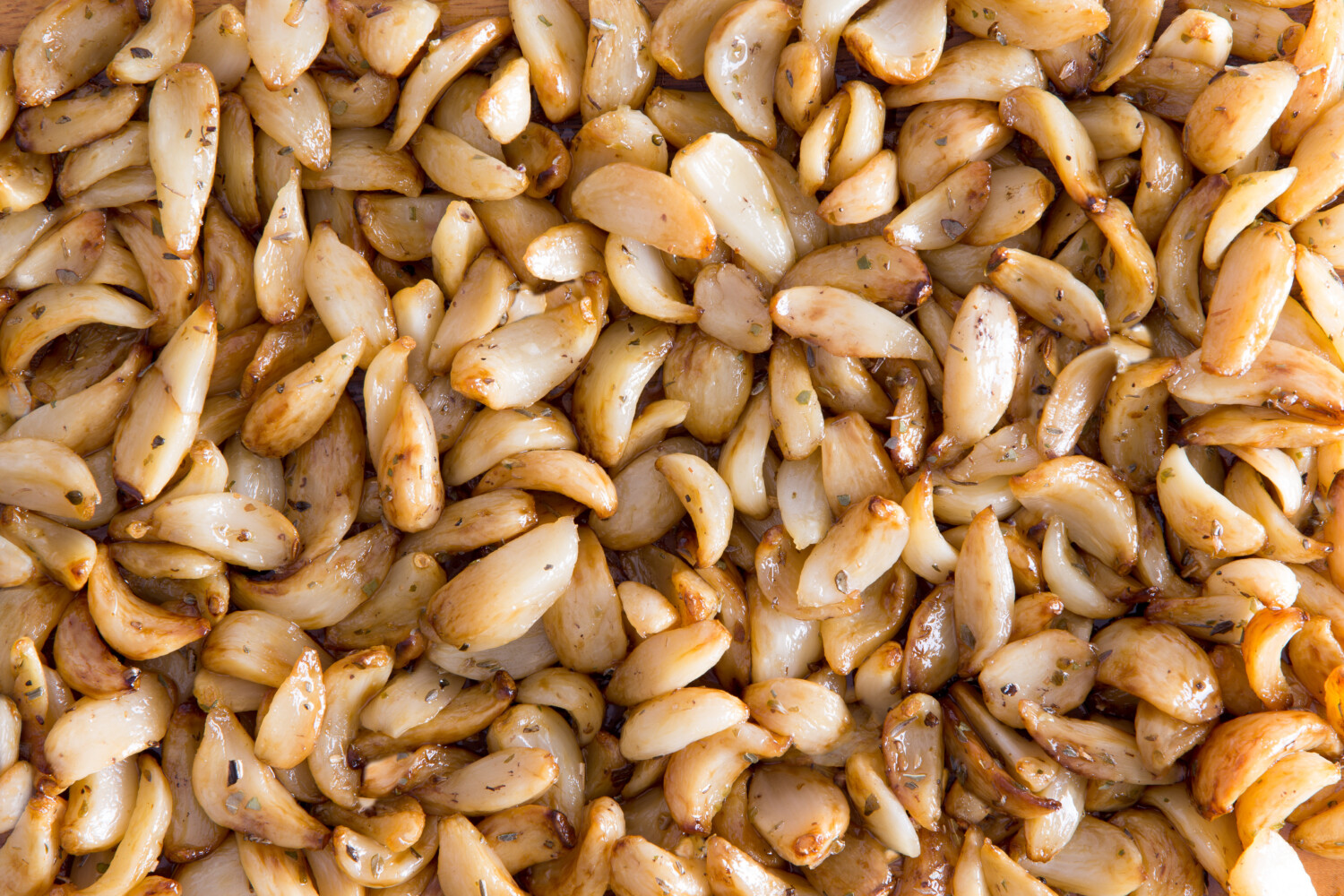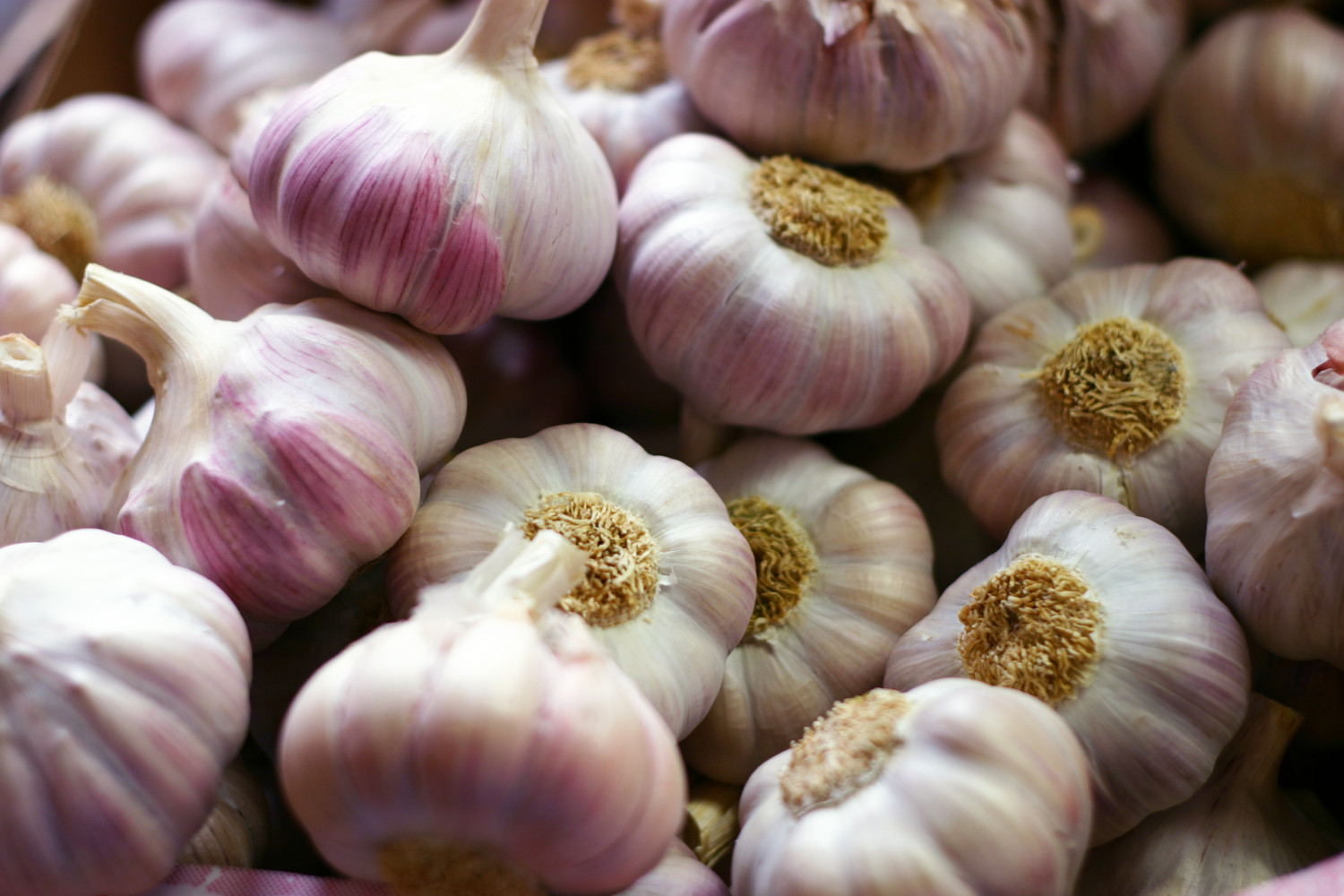Have you ever started peeling a head of garlic and noticed the cloves seem to be smaller than usual? Sometimes garlic consists of large cloves that take no time at all to peel, while other heads seem like they’re made up of several tiny pieces.
You might guess this had to do with how bulbs were grown or where they originated, but it’s actually simpler than that. It comes down to its variety: hardneck or softneck.

What Is Hardneck Garlic?
Hardneck garlic generates a false flower stalk, also known as a scape, and tends to be hardier than softneck varieties. It thrives in cooler temperatures and can endure cold winter climates like those in USDA Zone 0. Hardnecks contain a few large cloves per head that surround the central stalk, which makes it easier to peel. It has a bolder flavor and thicker skin than softneck varieties.
MORE: How to store potatoes, onions and garlic
What’s Different About Softneck Garlic
Softneck garlic grows best in milder climates and produces smaller cloves in larger quantities than its hardneck counterparts, typically between eight to 20 per head. If you see garlic woven into braids, they are softnecks. This type withstands shipping better and can be stored longer. While it can feel cumbersome to peel several small cloves for a recipe, it can be worth the effort. Softneck garlic, which has a mild flavor, is suitable for things that need just a touch of garlic, like salad dressings.

Tips To Determine Garlic Type
Hardneck stems are just like you’d expect—rather hard—while softneck varieties are more flexible. If you can feel just a few large cloves when handling the head, it’s likely hardneck garlic.
You’re most likely to find softnecks at the grocery store. But if you’re shopping at your local farmer’s market, it can be hard to decipher between softneck and hardneck garlic if the bulbs’ stems have been trimmed. Don’t hesitate to ask about the variety before purchasing.
Garlic doesn’t contain seeds. If you want to grow your own, you can order seeds online from a supplier or pick some up from a local farmer.
MORE: Easy garlic parmesan shrimp will be a new family favorite
Benefits of Garlic
Garlic not only tastes good, but it’s also good for us. This nutritious, low-calorie food is high in vitamin C, B6 and manganese and has been known to boost immune system function.

To store garlic, cloves can be placed in an airtight container inside the refrigerator and are best when used within one or two days. Whole cloves can be preserved for up to five months in cool, dry and dark places. If you chop way more garlic than you need, put the extra in the fridge to add to your meals the next day. Otherwise, you can freeze chopped garlic, but the texture will change. It’s a good idea to chop it very finely or crush it in a garlic press before you freeze it.
When it comes to enhancing a dish’s flavor, you can’t go wrong with hardneck or softneck garlic and rarely do recipes distinguish between varieties. If your recipe calls for one clove of garlic and you find yourself holding a baby clove, don’t hesitate to add more.
This story originally appeared on Simplemost. Check out Simplemost for additional stories.



